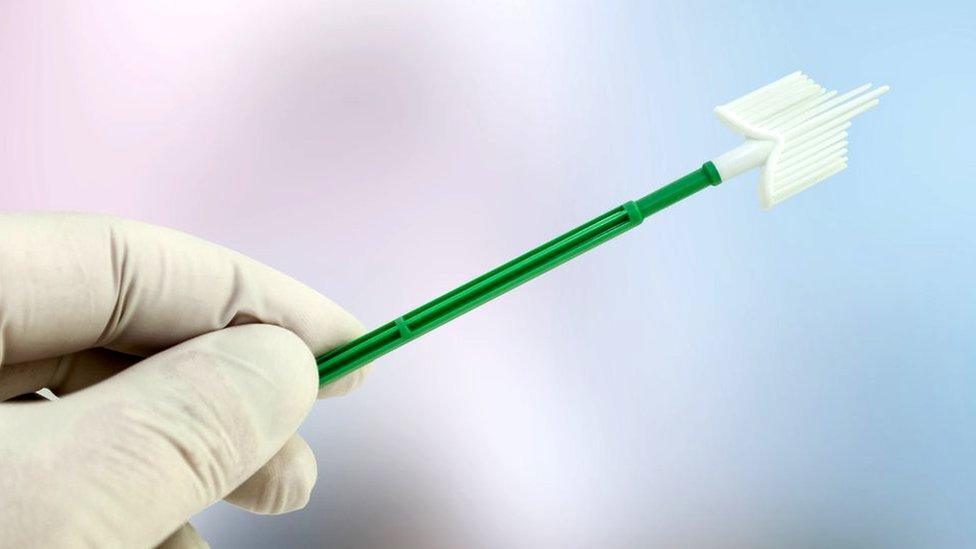Women can safely have fewer smears thanks to HPV test
- Published

All women and people with a cervix aged 25 to 64 should be invited for a smear test
Cervical screening is changing in the UK from routine three-yearly checks to five-yearly ones, but fewer smears will not mean more cancers missed, a major study confirms.
Data from 1.3 million women shows the move is a good one, say experts, and is possible thanks to a better lab test for smear samples.
It checks for an infection called HPV - the cause of most cervical cancers.
It is the earliest sign that a woman may be at risk.
Before this test was available, labs could only look for suspicious cells in smear samples that suggest cancer may already be present, or soon could be. Having HPV infection comes before abnormal cells developing.
Screening is not a test for cancer - it's a test to help prevent cancer.
How screening is changing
In England, Scotland, and Wales, HPV testing has already replaced cell (cytological) tests. Northern Ireland has yet to make the switch.
Wales and Scotland have moved to the five-yearly screening offer, while England and Northern Ireland still send out three-yearly invites.
HPV is a common virus that can infect cells including ones in the "neck of the womb" or cervix. There are more than 100 different types of HPV,, external and infections do not usually cause any problems.
Often the body can rid itself of it, but sometimes a high-risk HPV infection will persist and can lead to cancer if left untreated.
Cervical screening, which is free on the NHS, can look for these infections. If none is found, it is safe to wait another five years before the next routine check, because the chance of a cancer developing in the meantime is extremely low.
If HPV is found, people can be invited back for screening sooner, or referred for other tests and treatment if needed.
The study of 1.3 million women, published in the British Medical Journal, external, confirms this.
The chance of abnormal cell changes developing in the time interval between routine smear appointments was around one in 1,000 with the HPV check, compared to around four in 1,000 with the traditional cytology check.
Lead author Dr Matejka Rebolj, from King's College London, said: "These results are very reassuring. Changing to five-yearly screening will mean we can prevent just as many cancers as before, while allowing for fewer screens."
Karis Betts from Cancer Research UK, the charity which funded the study, called it "a win, win - fewer screens to stop more cancers".
Samantha Dixon, from Jo's Cervical Cancer Trust, said: "It is positive to have yet more evidence supporting the improvements being made to cervical screening across the UK.
"The most important message is to take up your cervical screening invitation when it arrives."
Cancer screening is for healthy people who do not have any symptoms. If you notice anything that doesn't feel right between screenings, expert advice is to speak to your doctor straight away.
Teenagers are also now offered a vaccine to help protect them against catching HPV, which should mean even fewer smear checks will be needed over their lifetime, say experts.
Who is offered a smear test and when?
All women and people with a cervix aged 25 to 64 should be invited
In England and Northern Ireland, they are offered every three years to people aged 25-49, and five-yearly to people aged 50-64
In Wales and Scotland, the offer is five-yearly
Related topics
- Published2 March 2022

- Published4 January 2022
